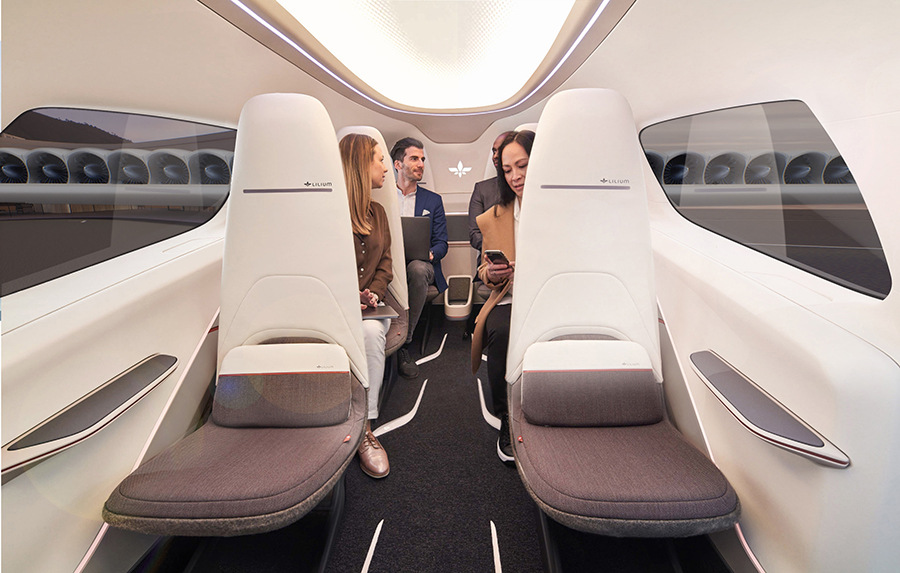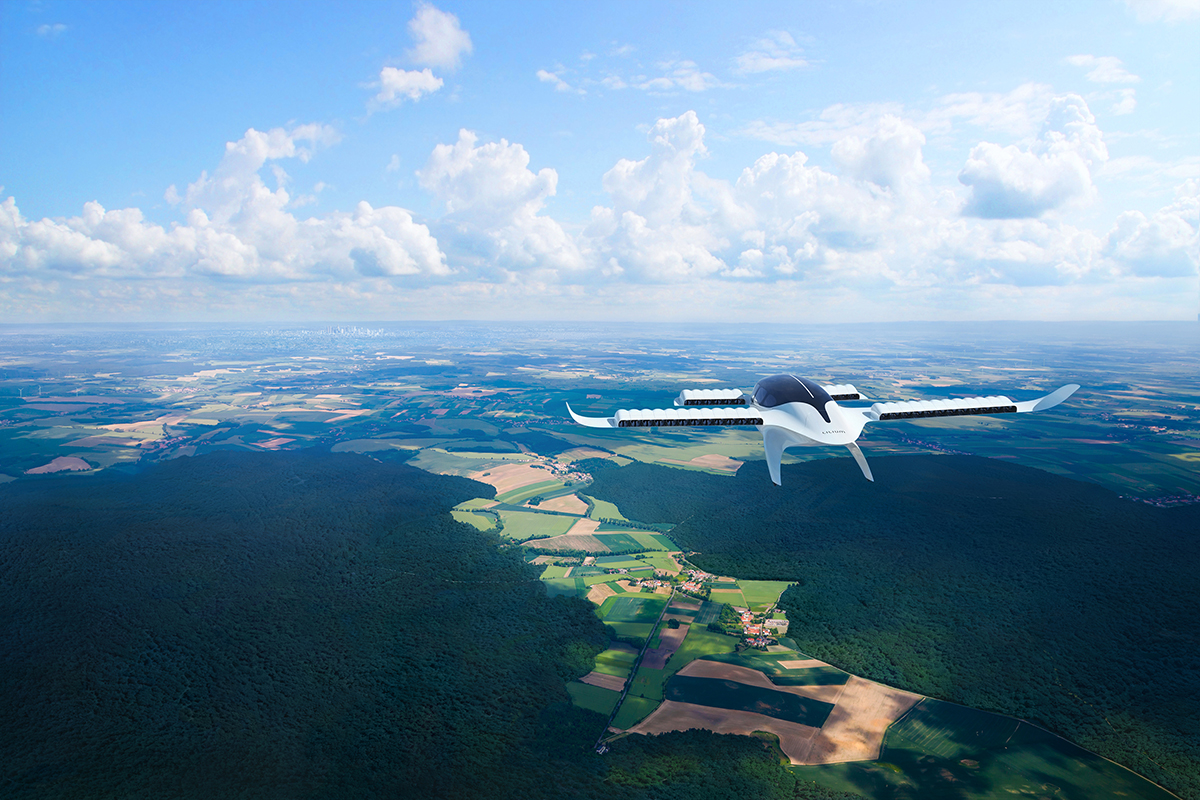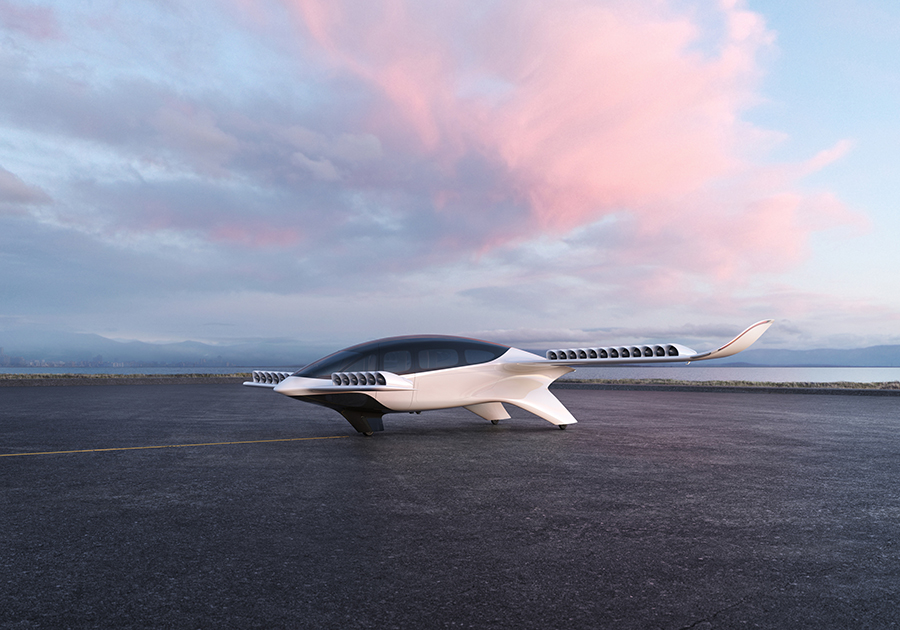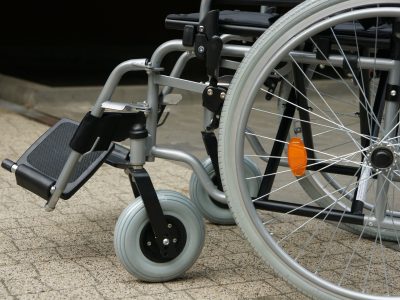Are we about to emerge from a Covid-stricken world to be catapulted into a sci-fi future of flying taxis?
Recently in the local press much hubbub understandably arose about “air-taxis” coming to Nuremberg. Albrecht Dürer Airport, together with Munich Airport and the company Lilium are to form a Regional Air Mobility Network for Bavaria. Other networks are being planned throughout the world, however Bavaria may be one of the earliest pioneers in this field, along with Florida in the USA and Nordrhein-Westfalen in Germany.
The word taxi actually originates from the German Taxameter (an automatic meter to record distance and fare) and from the Latin taxa – tax, charge. It is also used as a verb to describe an aircraft moving slowly on the ground – to taxi (apparently in allusion to how a taxi driver slowly cruises when looking for passengers). Soon we will have eVTOL (electrically powered Vertical Takeoff and Landing) flying taxis which will have less reason to taxi (along the ground) but more reason to charge – electrically speaking. And the taxameter (fare, booking) will be arranged via your smartphone. Though it’s unlikely that we will have flying taxis cruising around looking for passengers. Not for the foreseeable future, anyhow.
When someone mentions air taxis or flying taxis, images from sci-fi films come to mind, such as Bruce Willis’ portrayal of the quintessential 23rd century New York taxi driver in Luc Bessons,The Fifth Element, or the flying cars featured in Blade Runner. I initially envisaged an air taxi servicing the immediate vicinity: perhaps a 3-minute hop into the Erlangen city centre in order to avoid traffic jams. But it is not so. In the industry jargon, this would be an “Urban Air Mobility Service” (UAM). Lilium, the firm behind the venture, is proposing what they refer to as “Regional Air Mobility” (RAM), linking towns and cities between 40 and 500 km apart. Initially, it seems services will operate only between airports such as Nuremberg and Munich, which are to become hubs for the proposed regional air mobility network in Bavaria. As the network develops, other points will be added for smaller cities and towns and separate from airports. So it seems these “air taxis” will be more of an alternative to rail links.
The maximum range of the Lilium electric-jet-taxi is 250 km (the service range plus emergency reserves), making the 137 km Nuremberg Airport to Munich Airport flight easily manageable. On the other hand, the 190 km between Nuremberg and Frankfurt Airports is possibly too near the present limit (leaving only 60 km reserve). A flight will typically consist of a 10-second hover phase as the vehicle rises to a height of about 200 m, followed by a transition phase until a cruising altitude of 3000 m is reached. The maximum speed is 280 km/h. Journey prices initially are likely to be higher than first-class rail travel, considering the time efficiency, limited service (just six seats per vehicle) and the potentially high demand. All six seats will likely need to be filled to make journeys financially viable.

Interior of Lilium Fly-Taxi © Lilium
The filmmaker Jim Jarmusch commented that the significant parts of a journey in a taxi are the starting point and destination, and his film Night on Earth was about the relationships that take place between these points. Whether or not the significant parts of a ride in an air-taxi are the start and endpoints, or the journey itself, remains to be seen. The air taxis will also have a “cabby” pilot, likely sitting in a separate compartment from passengers, which is somewhat constraining to rapport. Nonetheless, the new experience is sure to provide fertile ground for new film material of all sorts.
Lilium claims the air-taxis will be completely CO2 emission-free, requiring them to use 100% green electricity. Most of the energy is actually used for takeoff and landing. Once in the air and at the correct flying height, aerodynamics are used to remain airborne, and only about 10% of the energy for the whole journey is used to propel the air-taxi to its destination.

Flying Taxi © Lilium
Lilium, based in Oberpfaffenhofen near Munich, are now on their 4th generation eVTOL vehicle since 2015. Their latest prototype, pictured here, is a five-seater design used for demonstration purposes. The next version will be a seven-seater (6 passengers and one pilot) vehicle. At present, they are applying for certification with EASA and FAA and hope to start operating commercially in 2024.
There are some in the aero industry who have doubts Lilium can meet its proposed deadlines or even create a viable product. There are rumours of problems with batteries, and one of the two prototypes was destroyed in a fire during maintenance in February 2020, apparently due to an electrical short circuit. Rather than using open propellers, Lilium has developed a technology they call “Ducted Electric Vectored Thrust” (DEVT). According to Lilium, this has an essential advantage over propeller driven competitors as it produces far less noise. This will surely be a deciding factor if this particular vehicle type is to flourish as a means of transport not only between airports but also between densely populated conurbations.
Another company in the race to develop eVTOL flying taxis is Volocopter GmbH, also based in Germany, near Stuttgart, which claims a noise level of only 65 dB when hovering at 75 m or when landing 73 dB at about 30 m distance. The Volocopter is basically an upsized drone for (two) people to sit in and describes itself as an urban air mobility solution connecting departure points and destinations no more than 20 km apart. Volocopter is to begin testing their service with airports in Paris, France.
So whilst there are still fewer aircraft flying due to Covid-19, perhaps we should make the most of clear blue skies. They may become scarce in the near future, at least in urban areas. Many companies are now vying for various aspects of this new market, expected to be worth over 300 billion dollars within 20 years.

















